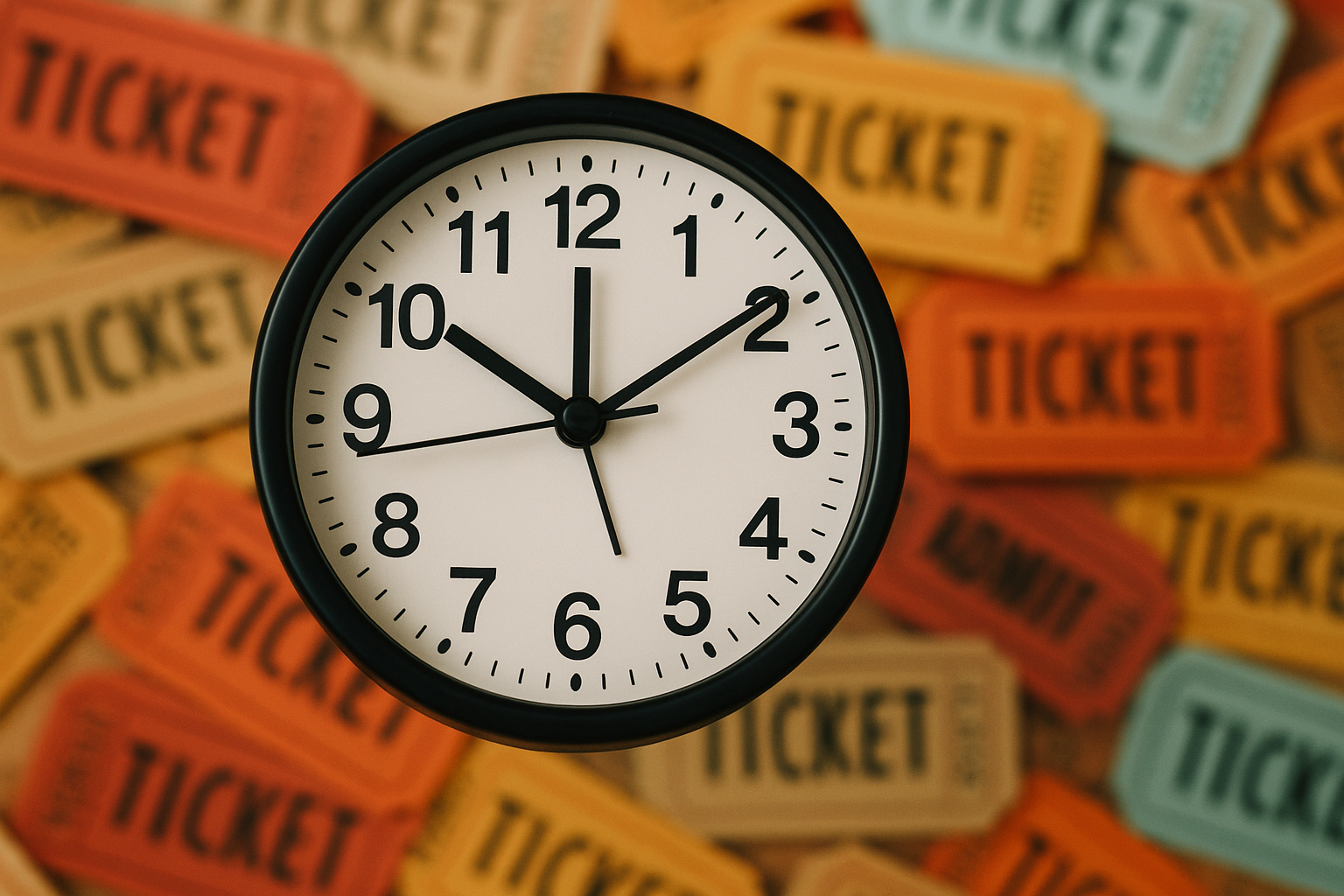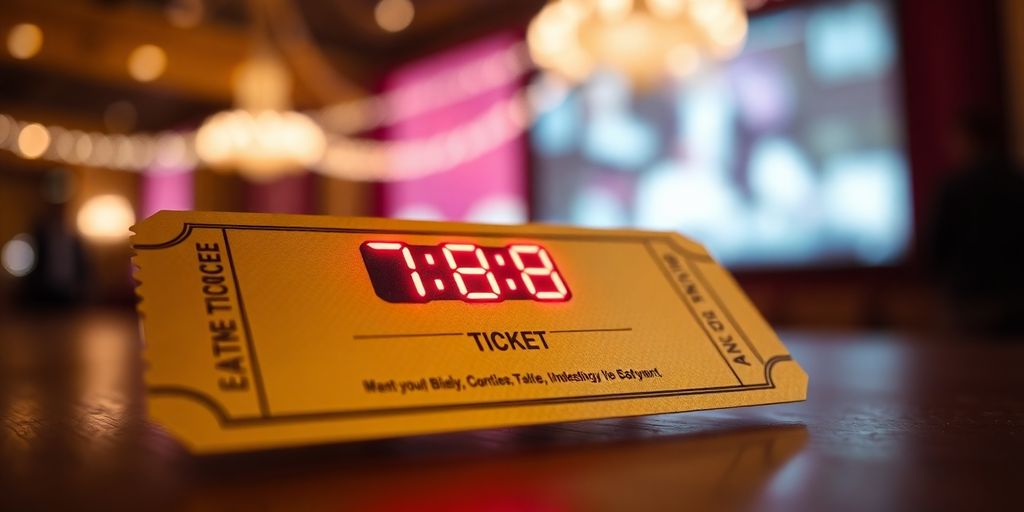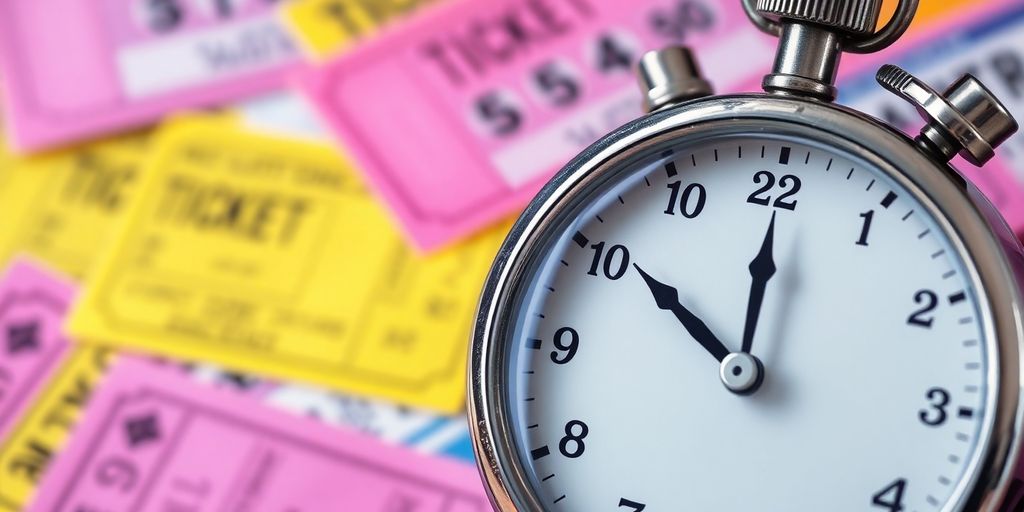Register as an organizer
Click the button below and finish your organizer registration, or fill out the form and we will be in touch to assist you.

Getting people to buy tickets quickly can be tricky. You want them to act, but you don't want to seem pushy or dishonest. That's where using things like countdown timers and making it clear that something is in short supply comes in handy. It's all about nudging people in the right direction without being shady. We'll look at how to do this right, so everyone wins.

Countdown timers are more than just a visual gimmick; they tap into some pretty deep psychological triggers that can really get people to buy tickets faster. Think about it – when you see a clock ticking down, it’s hard to ignore. It creates this immediate sense of needing to act, right? This isn't just about making sales; it's about helping people make a decision when they might otherwise get stuck.
So, why do these ticking clocks work so well? It’s mostly about scarcity and the fear of missing out, or FOMO. When tickets are limited, or when there’s a special price that’s only available for a short time, people naturally want to grab them before they’re gone. It’s like seeing the last few items on a shelf – you’re more likely to buy it then, aren’t you? This urgency can really speed things up. In fact, using these timers can boost engagement and get more people to click through, sometimes by as much as 30%.
Time-sensitive offers are the bread and butter of countdown timers. You can use them for all sorts of things, like early bird specials or flash sales. Imagine a concert where tickets are cheaper if you buy them in the first 48 hours. A countdown timer right there on the sales page makes that deadline super clear. It’s a simple way to encourage people to commit sooner rather than later. This can also help cut down on decision fatigue; with so many choices out there, a clear deadline can actually make it easier for someone to decide.
Visually, a countdown timer is a constant reminder. It’s not just text saying “offer ends soon”; it’s a dynamic element that changes. This constant presence grabs attention and keeps the urgency front and center. When people see the numbers dropping, it makes the offer feel more real and immediate. It’s a subtle nudge, but it’s effective. You can even test different ways of showing this, like changing the color of the timer or the wording around it, to see what gets the best response. It’s all about making that call to action hard to miss and even harder to ignore. You can find great tools to help you implement these timers on your event ticketing page.
Using scarcity to encourage ticket purchases can be a smart move, but it's super important to do it the right way. Nobody likes feeling tricked, right? When you're honest about why tickets are limited or why a deal won't last, you actually build trust. It shows you respect your customers and aren't just trying to pull a fast one. Think of it like this: if a band is truly playing a one-night-only show, that's genuine scarcity. It makes the event special. But if you say "limited tickets" when you've got tons more in the back, that's just not cool.
Genuine scarcity is all about being upfront. When you tell people there are only a few tickets left for a popular event, and that's actually true, it makes those tickets feel more special. It’s not just about selling more; it’s about acknowledging the real demand. This honesty helps people feel good about their purchase because they know they’re getting something that’s genuinely in demand. It’s a way to show respect for your audience and build a relationship that lasts longer than just one sale. We're talking about creating a sense of shared excitement, not just a quick transaction. It’s about making people feel like they’re part of something exclusive because it’s actually exclusive.
Using fake scarcity, like saying a sale ends tonight when you know you'll just extend it, is a fast track to losing customer trust. People aren't stupid; they'll catch on. When they realize they were pressured into buying something based on a lie, they feel cheated. This can lead to bad reviews, people talking negatively about your event, and a general feeling of distrust towards your brand. It’s a short-term gain for a long-term loss. Imagine seeing a "limited stock" warning that never changes – it just becomes background noise, or worse, an annoyance. It’s better to be upfront about the real situation, even if it means fewer immediate sales. You want people to come back, and that only happens if they trust you.
Finding that sweet spot between creating urgency and making sure customers feel they're getting good value is key. It’s not just about making people buy fast; it’s about making them feel good about why they bought. This means the tickets themselves, or the event they’re for, need to have real appeal. If the event is amazing, the scarcity just adds a little nudge. If the event is just okay, scarcity can feel like a trick. So, focus on what makes your event great in the first place. Offer clear benefits for acting quickly, like a better seat or a small discount, rather than just relying on the ticking clock. The goal is to make the customer feel smart for buying, not pressured.
Here’s a quick look at how different scarcity types can be used:
When you're honest about limitations, you're not just selling tickets; you're building a reputation for integrity. That's a much bigger win in the long run. It’s about making people feel like they made a smart choice, not like they were tricked into one. This approach helps create a positive customer experience that encourages repeat business and word-of-mouth referrals.
When you're selling tickets, especially for popular events, playing with the idea of limited availability can really get people moving. It’s not just about having fewer tickets; it’s about how you present that fact. Think about it: if everyone knows there are tons of tickets, why rush? But if they sense that the good seats, or even any seats, might disappear fast, they’re more likely to click that buy button.
This is where you let people know things are getting tight. When a show is popular, you can put up messages like "Only 50 tickets left!" or "Selling fast!". It’s a simple way to show that demand is high. This kind of heads-up can make people who are on the fence decide to buy right then and there. It’s like seeing a popular item at a store with only a few left on the shelf – you grab it before someone else does. This approach taps into that basic human desire not to miss out on something desirable. It’s a key part of scarcity marketing.
Offering a discount for people who buy tickets early is a classic move. It rewards the eager fans and helps you get a good chunk of sales done upfront. You might offer a lower price for the first 100 tickets sold, or a special rate for the first week. This not only helps with cash flow but also builds momentum. People who are really keen on attending will jump on this to save money, and it creates an initial buzz around the event. It’s a win-win: fans save, and you get early sales.
Sometimes, you can give certain groups of people a head start. This could be for past attendees, members of a fan club, or people who signed up for email alerts. Letting these groups buy tickets before the general public creates a sense of VIP treatment. It makes them feel valued and gives them a chance to get the best tickets before they’re gone. This exclusivity can really encourage loyalty and drive sales from your most dedicated fans, often before the wider public even knows tickets are available.
People are naturally influenced by what others are doing. When we see that other people are interested in or buying something, it makes us feel like we should too. It’s like a big, unspoken endorsement. For ticket sales, this means showing off how popular an event is can really get people moving.
Imagine you’re looking at tickets for a concert. If you see a little notification pop up saying, “15 people are currently viewing this event” or “5 tickets sold in the last hour,” that tells you something important. It tells you that other people are interested, and maybe even buying. This creates a sense of momentum. It’s not just you wondering if it’s a good event; it’s a whole crowd of people showing their interest. This kind of real-time activity can make you feel like you need to decide faster before the tickets are all gone. It’s a subtle nudge, but it works because it taps into our desire to be part of something popular.
Beyond just live updates, you can actively show how popular an event is. Think about displaying a counter that says, “Over 10,000 tickets sold!” or highlighting that a specific seating section is almost full. This isn't just about numbers; it's about building a narrative. It suggests that the event is in high demand and that many others have already decided it’s worth their time and money. This social validation is powerful. It reduces the perceived risk for potential buyers because they see that many others have already taken the leap and found value. It’s a way of saying, “Don’t miss out on what everyone else is excited about.” We often look to others to guide our decisions, especially when faced with many choices, and seeing an event’s popularity makes it an easier choice to make. This is a key part of how Booking.com encourages bookings.
While seeing others buy is great, hearing directly from happy attendees is even better. Testimonials, reviews, and even short video clips from past attendees can add a huge layer of trust. When someone reads about how amazing a previous event was, or sees a video of people having a fantastic time, it makes the upcoming event feel more real and more desirable. It’s like getting a recommendation from a friend. These personal stories help potential buyers imagine themselves at the event and experiencing the same enjoyment. They provide concrete examples of the value and experience offered, making the decision to purchase tickets much easier and more confident. It’s about building a reputation through the voices of satisfied customers, showing that the event consistently delivers a great experience.

Flash sales are like surprise parties for your ticket buyers. They pop up unexpectedly, offering a significant discount for a very short window. Think of it as a limited-time treasure hunt. The key here is the surprise element combined with a ticking clock. It makes people feel like they've stumbled upon something special, a secret deal just for them. This can really get people to pay attention and act fast, especially if the event is something they've been eyeing. It’s a great way to clear out remaining inventory or generate a quick burst of sales.
Setting a clear deadline for ticket registration is a straightforward way to introduce urgency. It tells people, "This is your chance, and it won't last forever." When you have a firm end date, it prompts potential attendees to make a decision sooner rather than later. This is especially effective for events where early planning is beneficial, like conferences or workshops. It helps manage your own planning and gives attendees a clear signal to commit.
FOMO, or the fear of missing out, is a powerful motivator. When people see that tickets are limited or that a special offer is ending soon, they worry about being left behind. This feeling can be a strong push to buy. It’s not just about wanting the ticket; it’s about not wanting to miss the experience everyone else might be talking about. We see this a lot with popular concerts or festivals; if you don't get your ticket early, you might not get one at all. This scarcity drives people to act, even if they were on the fence before. It’s a natural human response to potential loss, and when used correctly, it can significantly boost ticket sales. For example, seeing that only a few tickets remain for a popular show can be a strong signal to purchase immediately, rather than risk missing the event entirely. This is why keeping an eye on ticket availability is important for eager attendees.
So, you've put those countdown timers and scarcity messages to work, and now you're probably wondering if it's actually doing anything. It's smart to check, right? You don't want to just throw these tactics out there without knowing if they're helping or just annoying people.
When you're looking at how well your countdown timers are doing, you want to focus on a few main things. Conversion rate is a big one – how many people who saw the timer actually bought a ticket? Also, keep an eye on your average order value. Sometimes, when people feel rushed, they might add more to their cart. On the flip side, you'll want to check your cart abandonment rate. If it goes up, maybe the urgency is too much. The goal is to see these timers push people towards buying, not scare them away. It's all about finding that sweet spot.
Looking at conversion rates specifically with scarcity tactics is pretty straightforward. You compare the conversion rate of people who saw your scarcity message (like "Only 5 tickets left!") versus those who didn't. Did the scarcity message make more people click that buy button? You can also look at how quickly people are buying. Are they purchasing right after seeing the scarcity notice, or is it a slower trickle? This helps you understand the immediate impact of limited availability. You can use tools like Google Analytics to track how visitors interact with these elements on your page.
Once you've gathered your data, it's time to figure out what's working and what's not. Maybe your countdown timer is great for driving initial sales, but the scarcity message about limited tickets isn't moving the needle as much. You might try changing the wording, the placement, or even the type of scarcity you're using. For example, you could test a time-based offer against a quantity-based one. It’s a bit of trial and error, but by looking at the numbers, you can make smarter choices about how to use these urgency tactics effectively for your next event. Remember, transparency is key; don't create false scarcity, as that can really hurt your reputation.
So, we've talked about how things like countdown timers and showing limited stock can really get people to buy tickets faster. It's all about that feeling of not wanting to miss out. When done right, these methods aren't just tricks; they can actually help people make decisions they might otherwise put off. But remember, the key is to be honest about it. If you say there are only a few tickets left, make sure there really are. Using these tactics fairly builds trust, and that's what keeps customers coming back. It’s a balancing act, for sure, but when you get it right, it works out for everyone.
Countdown timers show people how much time they have left to buy tickets. This makes them feel like they need to buy them quickly before the time runs out or the tickets are gone.
Using timers and showing that tickets are limited makes people feel like they might miss out on a great event. This 'fear of missing out,' or FOMO, encourages them to buy tickets sooner rather than later.
It's important to be honest. If you say tickets are running low or a sale is ending soon, it should be true. Faking scarcity can make customers upset and stop trusting you.
Yes, offering discounts for buying early, like 'early bird specials,' is a good way to get people to buy tickets quickly. It gives them a reason to act fast and save money.
Showing how many tickets have already been sold or how many people are looking at them right now can make others want to buy too. It shows the event is popular and might sell out.
You should track how many people click on your ticket offers, how many actually buy tickets, and if they complete the purchase. This helps you see if your urgency tactics are working and how to make them better.
More blogs
Click the button below and finish your organizer registration, or fill out the form and we will be in touch to assist you.